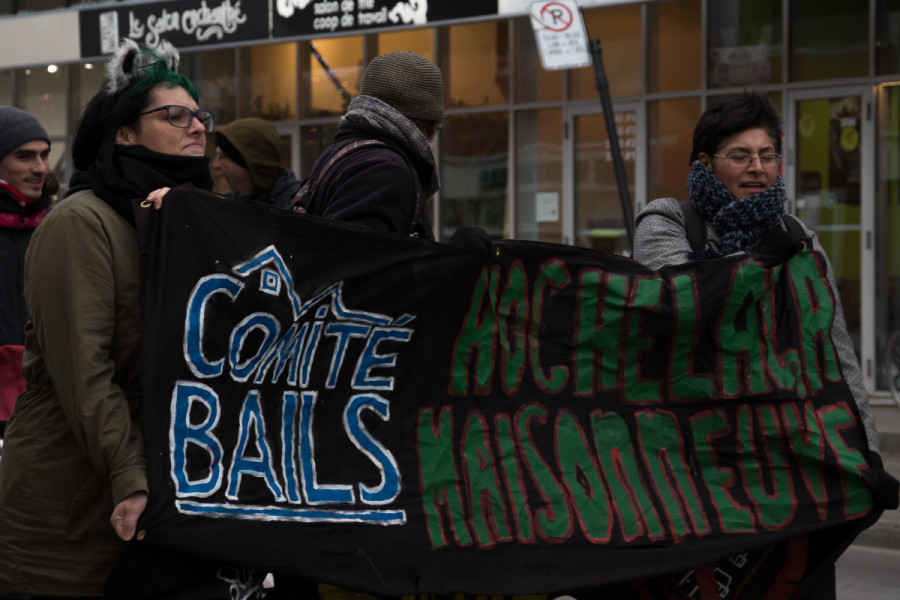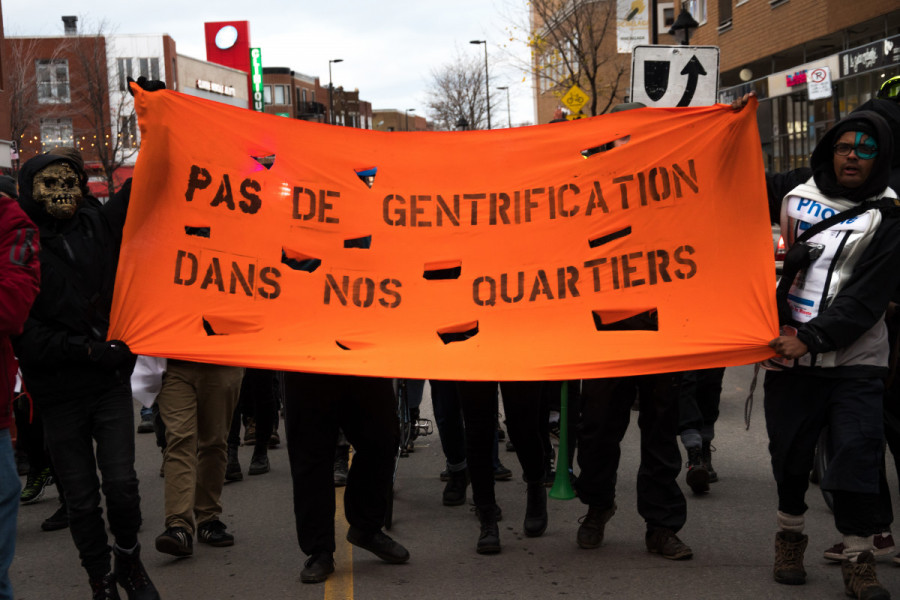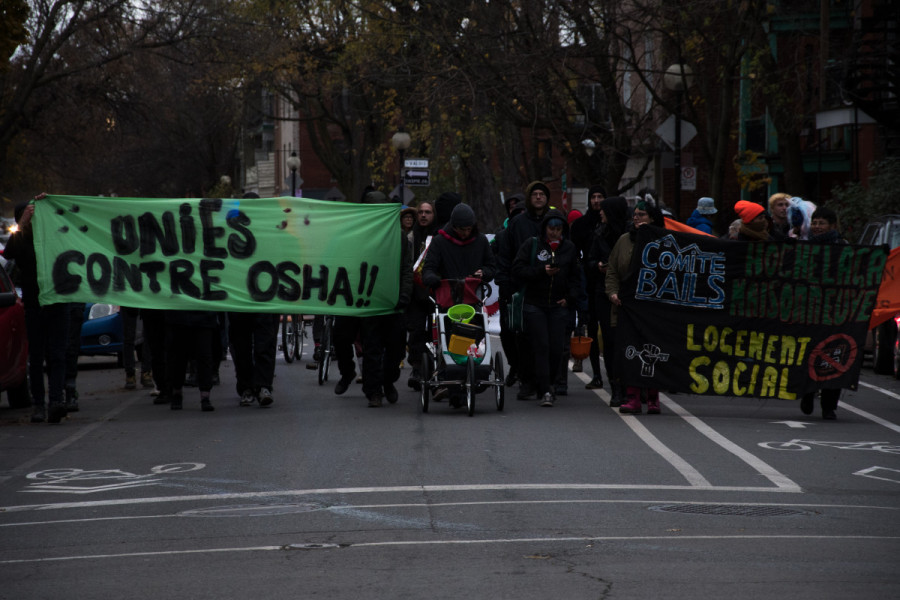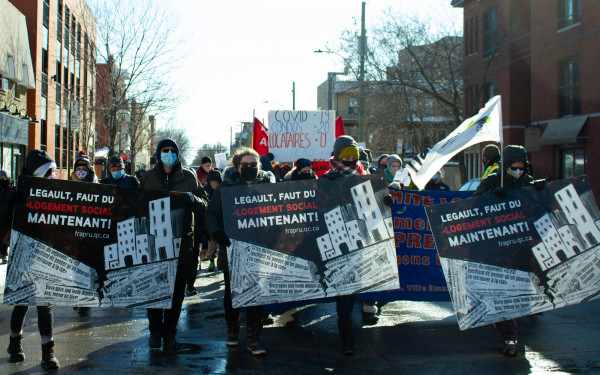Halloween Protest Fights Back Against Gentrification
“Ni HoMa, ni Osha, fuck le branding d’Hochelaga,” Chanted Protesters Against the Gentrification of Their Neighbourhood.
Protesters braved the cold in Hochelaga-Maisonneuve on the first day of November to march against a terrifying problem—gentrification.
Montreal’s postponing of Halloween conveniently aligned with the protest’s theme. The organiser, the Comité de base pour l’action et l’information sur le logement social (BAILS), invited people to come in costume.
“In Hochelaga, a large part of the local population has been savagely forced to move out, to leave the neighbourhood, and we want that to stop,” said Alfred Pagé, a member of the Comité BAILS. “The most obvious cause is new renters who come because the neighbourhood is cheap, and they take leases at whatever cost.”
“I’m here because I feel like it’s very important to get together and feel more powerful to fight some systemic injustice,” said Mette Johnson, one of the few costumed protesters. Short on time, she dressed as a “pink person,” wearing every pink item in her house. Johnson has only lived in Hochelaga for two years, but has noticed it change.
“I’ve heard friends talk to me about changes in Hochelaga, like new shops that were completely out of range for them, too expensive, and they didn’t fit with the level of money people have here and their needs,” she said. “When I arrived it was already like this, but the biggest change is the Osha condo project.”
The Osha condo development was one of the key issues, their office being the protest’s ultimate destination. With 200 units, the project would span the size of a block and is being billed as a “neighbourhood inside a neighbourhood.” Residents said they are already feeling its effects.
“Since the project, there are way more police in the neighbourhood. Like, way more,” said Johnson. “The kind of people that are going to live in the condo, they don’t want to live in the neighbourhood with people that may be sex workers or, you know, just people in the streets, so I think they’re trying to “clean” the neighbourhood.”
The kind of people that are going to live in the condo, they don’t want to live in the neighbourhood with people that may be sex workers or, you know, just people in the streets, so I think they’re trying to “clean” the neighbourhood. — Mette Johnson
The protest’s police presence, large relative to its size, was most felt at the future site of the Osha development. Several police officers seemed to form a wall between the front door of its sales office and the crowd.
The crowd laughed and cheered as a young girl in her Halloween costume snuck by the police to stick her face in an office window.
The protesters initially gathered at Place Simon-Valois in Hochelaga-Maisonneuve, a newly redeveloped public square emblematic of the neighbourhood’s gentrification.

They marched by 1800 Nicolet St., the site of a large industrial building, and the Lantic lot, a vacant lot at the corner of Ste. Catherine St. and Jeanne-d’Arc Ave. that has been for sale for many years. The Comité BAILS sees both locations as ideal sites for new social housing developments.
Social housing is seen as a way to counteract gentrification in neighbourhoods.
“To solidify people’s right to live, it has to go through social housing because it becomes a collective property,” said Marie-José Corriveau, coordinator of the Front d’action populaire en réaménagement urbain. “You are sheltered from repossession, renoviction, from abusive rent increases. In our opinion, it’s the best way.”
Corriveau, who once lived in Hochelaga, initially moved there to escape the gentrification of the Plateau. She contrasted how differently it’s happening now. “Today, in the central neighbourhoods of Montreal, everything is happening at phenomenal speed,” she said.
“Tenants need to be better protected against such tactics as renovictions,” said Maxime Roy-Allard, spokesperson for the Regroupement des comités logement et associations de locataires du Québec. Renovictions are when landlords use renovations to evict tenants and find new ones who are willing to pay more.
Despite the protest’s relatively small size of around 50 people, Roy-Allard is hopeful actions like these can effect change.
“I think the more we are in this movement against gentrification, the better our chances to fight for better housing conditions, to save people in their homes, so they’re not evicted and [having] to move very far away from their neighbourhood, because that’s what’s happening right now.”
With files from Marcus Bankuti



_600_832_s.png)


2_600_375_90_s_c1.jpg)
1_600_375_90_s_c1.jpg)
_600_375_90_s_c1.jpg)